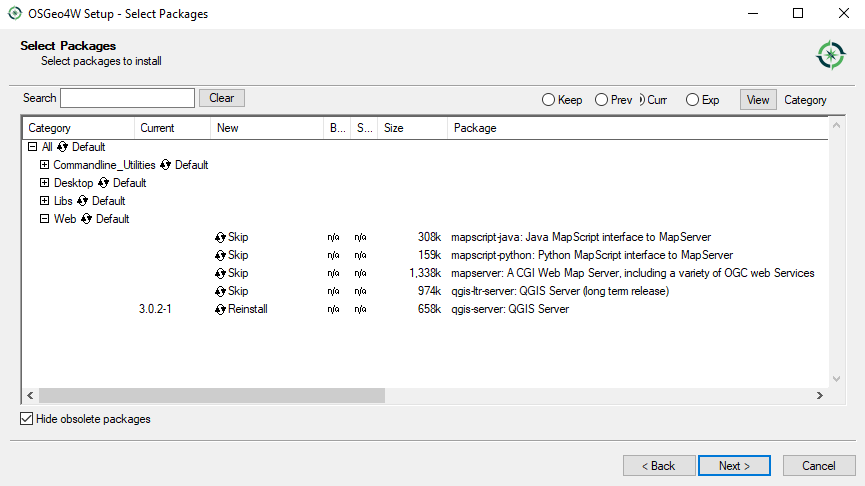

- #Sudo apt get install qgis software#
- #Sudo apt get install qgis free#
- #Sudo apt get install qgis mac#
Please check also if there is a "Standalone" QGIS version installed: Start -> Settings -> Apps & Features. Uninstalling QGIS To deinstall a QGIS version simply delete the installation folder, where the default paths are C:\OSGeo4W64, the user settings folder, downloaded plugins and user scripts C:\Users\YourName\AppData\Roaming\QGIS and related icons in the start menu and on the Desktop.
Do you have already a QGIS version installed? Please first deinstall previous QGIS versions before going on to avoid confusions. If you want to follow the exercises of this tutorial on Windows, we recommend following the .jpg)
#Sudo apt get install qgis mac#
QGIS 3.10, available for Windows, Mac OSX,
#Sudo apt get install qgis software#
Here are the links to download the software from the internet and install it yourself:
#Sudo apt get install qgis free#
We prefer using Free and Open Source Software because this enables you to install software on your own computer without paying for costly licenses, to learn and continue your work at home.
1.3.1 Installation for Ubuntu 18.0.4 ("Bionic Beaver"). There are no ads in this search engine enabler service. GitHub blocks many GitHub Wikis from search engines. ℹ️About GitHub Wiki SEE, a search engine enabler for GitHub Wikis as OTB Plugin installation instructions are quite easy to follow in the readme file of its repository. Orfeo ToolBox's, OTB Plugin for Qgis provides GIS image processing capabilities of OTB within QGIS. With QuickOSM plugin you can execute customs Overpass queries in QGIS to get OSM data. SRTM downloader is a plugin for download of SRTM Tiles from NASA. Lat Lon Tools makes it easy to capture, zoom to coordinates, and interact with other on-line mapping tools. Bonus : :wink: Some Qgis Plugins that are useful for GIS application:. For any further details follow the instructions on qgis website. These are the basic steps to get Qgis going on your system. sudo apt-get install qgis python3-qgis qgis-plugin-grass. Now you are ready to install Qgis release of your choice. 

gpg -export -armor CAEB3DC3BDF7FB45 | sudo apt-key add. After you have verified the fingerprint you can add the key to apt by typing following line in your terminal. In case of keyserver errors add the repository public key to your apt keyring, by typing the following line of commands in your terminal:. After that type the command below in your terminal:. The link to qgis repository of your choice can be found in the Repository column of Lines of packages table in this link. The above examples follows the following template:. # Qgis release with ubuntugis-unstable dependencies version. Install the Qgis release with ubuntugis-unstable dependencies version and use the following lines for this step :. What happens is the Gdal version from ppa:ubuntugis/ubuntugis-unstable PPA repository does not match with the Gdal version required by Qgis installed with repository. Especially, if you intall Gdal with this process from ppa:ubuntugis/ubuntugis-unstable PPA repository. Reason is the version incompatibility of Gdal installed in your system with the Gdal version demand of Qgis you are about to install. Qgis-plugin-grass : Depends: libqgis-app3.6.3 but it is not going to be installed Python3-qgis : Depends: libqgis-analysis3.6.3 but it is not going to be installedĭepends: libqgis-analysis3.6.3 but it is not going to be installedĭepends: libqgis-app3.6.3 but it is not going to be installed The following packages have unmet dependencies: You will get Error message similar to :. Bonus Tip: :tipping_hand_man: Sometimes you will have a problem while installing Qgis from regular repository. # QGIS Long Term Release install source. Or, if you want to install the Qgis Long Term Release version. # QGIS Latest Release install from source. If you want to install the Qgis Latest Release version. Add the following lines for one of the repositories of your choice to your /etc/apt/sources.list:. sudo apt-get -purge remove qgis python3-qgis qgis-plugin-grass. Remove any already installed version of Qgis from your system. However, it should be a general instruction for any Linux version or QGis package type you would like to install. Following example was done for Ubuntu Bionic (18.04) and wanted to install QGis Long Term Release package. However, the following tips might help you with some possible difficulties. There is pretty much all information on Qgis website on doing this.



.jpg)




 0 kommentar(er)
0 kommentar(er)
